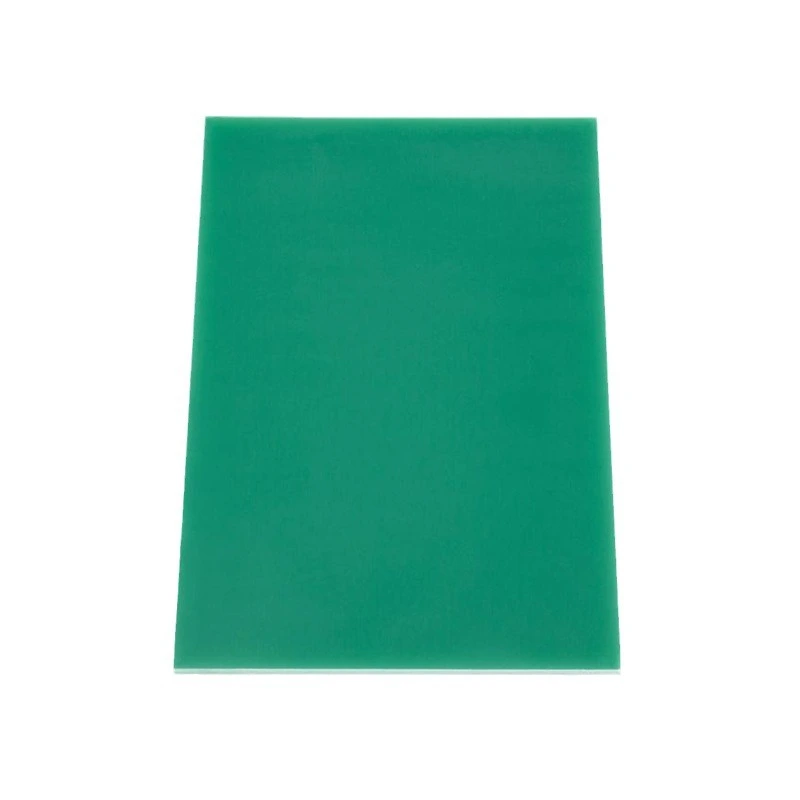What Are the Most Overlooked Specifications in G11 Selection?
Dielectric Strength Considerations
One of the most critical yet often overlooked specifications when selecting G11 sheets is dielectric strength. This property measures the material's ability to withstand electric fields without breaking down. Buyers frequently focus on mechanical properties while neglecting this crucial electrical characteristic. Inadequate dielectric strength can lead to electrical failures, compromising the safety and functionality of the entire system.
Thermal Conductivity Misconceptions
Another frequently overlooked aspect is thermal conductivity. G11 sheets are known for their excellent insulation properties, but the specific thermal conductivity can vary. In applications where heat dissipation is crucial, neglecting this factor can result in overheating issues. Understanding the thermal conductivity requirements of your application is vital for ensuring optimal performance and longevity of the G11 sheets.
Moisture Absorption Rates
Moisture absorption is a specification that buyers often underestimate. G11 sheets have low moisture absorption rates, but the exact values can differ between manufacturers and grades. In environments with high humidity or potential water exposure, overlooking this specification can lead to dimensional changes and degradation of electrical properties over time. Careful consideration of moisture absorption rates is essential for applications in marine or high-humidity environments.
Mismatched Thickness, Inaccurate Temperature Ratings
Thickness Selection Errors
Selecting the appropriate thickness of G11 sheets is crucial for ensuring optimal performance in specific applications. Many buyers make the mistake of choosing thickness based solely on cost considerations or general assumptions. This can lead to either over-engineering, resulting in unnecessary expenses, or under-engineering, which compromises the structural integrity and insulation properties of the material. It's essential to carefully analyze the mechanical and electrical requirements of your application to determine the ideal thickness.
Misinterpretation of Temperature Ratings
Temperature ratings are another area where buyers often make mistakes. G11 sheets are known for their high-temperature resistance, but misinterpreting these ratings can lead to premature failure. Some buyers confuse continuous operating temperature with short-term maximum temperature, leading to the use of G11 sheets in environments that exceed their capabilities. Understanding the difference between these ratings and accurately assessing the temperature conditions in your application is crucial for ensuring the longevity and reliability of G11 components.
Overlooking Thermal Expansion Coefficients
The thermal expansion coefficient of G11 sheets is a specification that's frequently overlooked but can have significant implications in certain applications. When G11 sheets are used in assemblies with other materials, differences in thermal expansion can lead to stress, warping, or misalignment. Failing to consider this property can result in unexpected structural issues, especially in applications with significant temperature fluctuations. Careful matching of thermal expansion coefficients is essential for ensuring the long-term stability of multi-material assemblies.
Avoiding Low-Quality G11 from Unverified Manufacturers
Importance of Manufacturer Verification
One of the most critical mistakes buyers make is sourcing G11 sheets from unverified manufacturers. The quality of G11 can vary significantly between producers, and purchasing from unverified sources can lead to substandard materials that don't meet the required specifications. This not only affects the performance of the final product but can also pose safety risks in critical applications. Thorough verification of manufacturers, including their certifications, quality control processes, and track record, is essential for ensuring the reliability and consistency of G11 sheets.
Understanding Quality Certifications
Quality certifications play a crucial role in ensuring the reliability of G11 sheets, yet many buyers overlook their significance. Reputable manufacturers adhere to stringent quality standards and possess certifications such as ISO 9001. These certifications indicate that the manufacturer follows consistent quality control processes, ensuring that their G11 sheets meet specified standards. Failing to verify these certifications can result in the purchase of inconsistent or subpar materials, potentially leading to failures in critical applications.
Importance of Material Testing and Verification
Even when purchasing from reputable manufacturers, it's a mistake to assume that all batches of G11 sheets will be identical. Variations in raw materials and manufacturing processes can lead to slight differences in properties. Neglecting to perform or request material testing and verification can result in the use of G11 sheets that don't meet the specific requirements of your application. Implementing a robust testing and verification process, either in-house or through third-party laboratories, is crucial for ensuring that the received G11 sheets consistently meet the required specifications.
Conclusion
Avoiding common mistakes when buying G11 sheets is crucial for ensuring the success and reliability of your projects. By paying attention to often-overlooked specifications, correctly interpreting temperature ratings, selecting appropriate thicknesses, and sourcing from verified manufacturers, you can significantly enhance the performance and longevity of your G11 components. Remember that thorough research, careful consideration of your specific application requirements, and a commitment to quality are key to making informed purchasing decisions. Investing time and resources in the proper selection of G11 sheets will ultimately lead to improved product performance, reduced maintenance costs, and enhanced safety in your applications.
Contact Us
For more information about our high-quality G11 sheets and expert guidance on selecting the right materials for your project, please contact us at info@jhd-material.com. Our team of specialists is ready to assist you in making informed decisions and avoiding common pitfalls in G11 sheet procurement.






